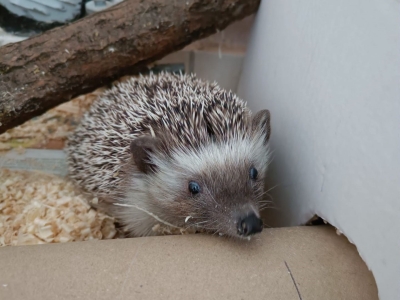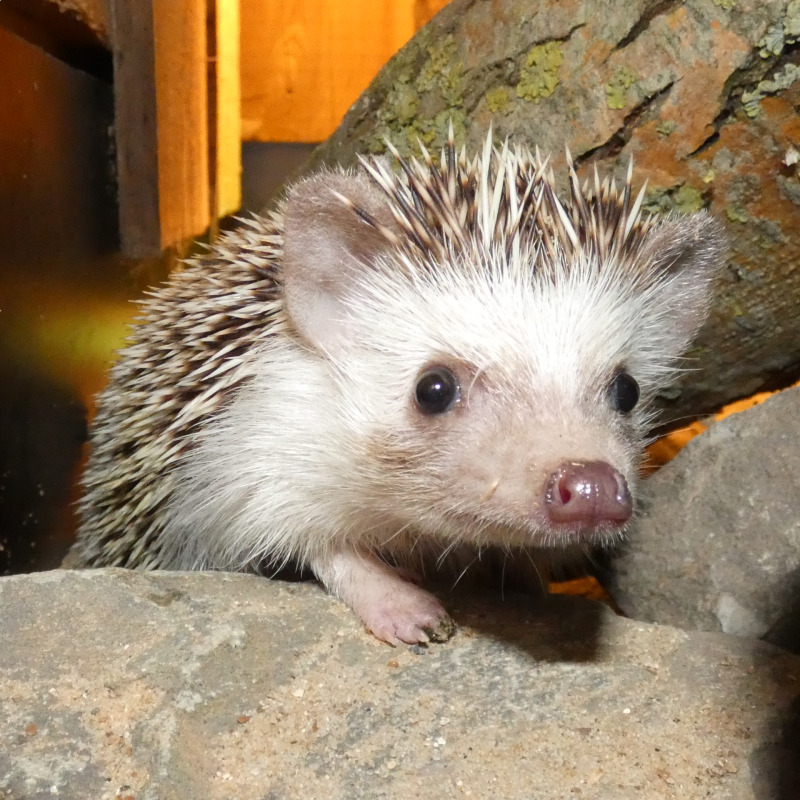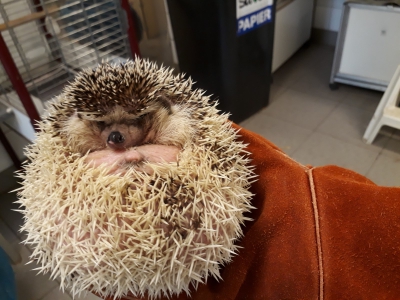Four-toed hedgehog Atelerix albiventris
Animals in our sanctuary
Puk (Male)

Puk was found hidden in a woman's handbag during a routine check at Raversijde airport. Four-toed hedgehog are not on the list of legal pets in Belgium. Puk was also obese. Now Puk can enjoy proper nutrition and exercise.
Where does he feel most at home?
The four-toed hedgehog lives mainly in the more open, drier areas such as the steppes, savannas and semi-deserts of Africa. He’ll be absent in the more humid and densely forested areas.
What's his favourite food?
They like to eat berries, fruits, eggs, insects, lizards and mice.
Fun fact
Like the Western European hedgehog, the four-toed hedgehog sometimes makes large amounts of saliva, which it spreads over its back. The function of this behaviour is as yet unknown.
Adopt this Four-toed hedgehog




